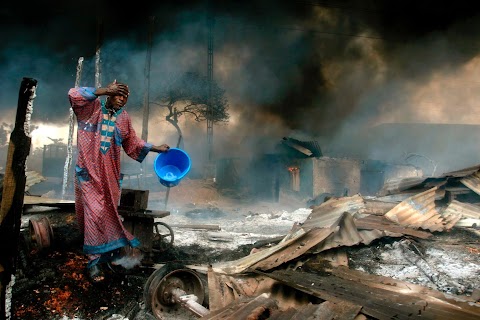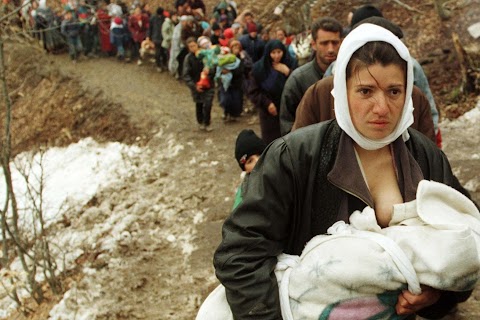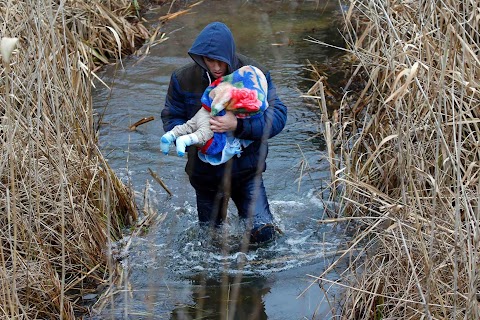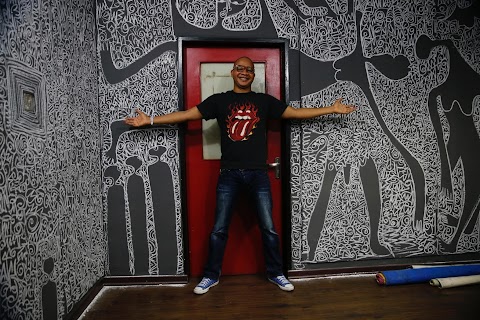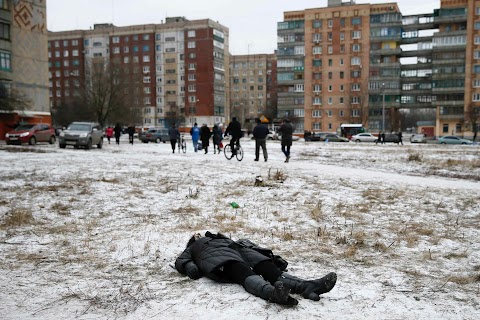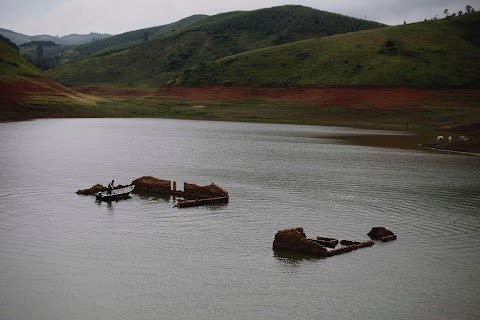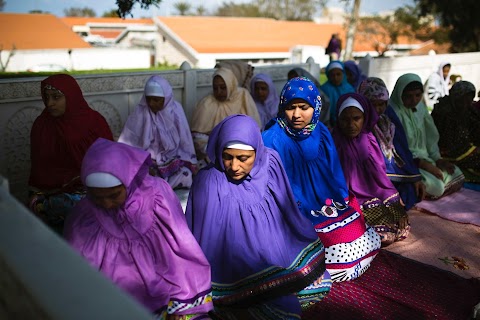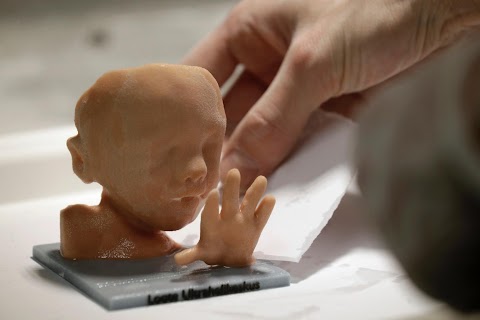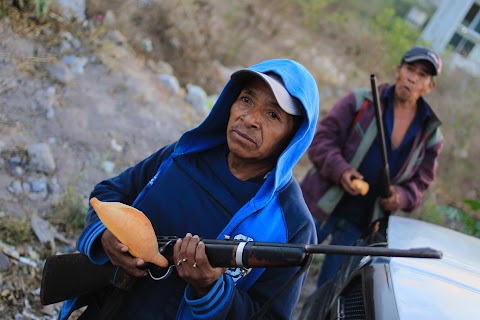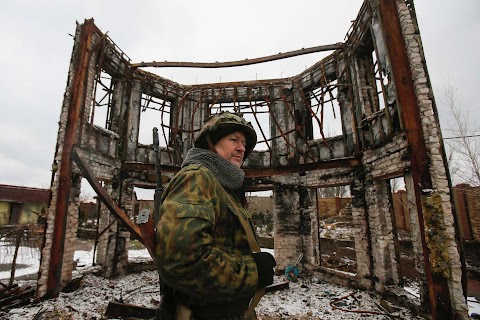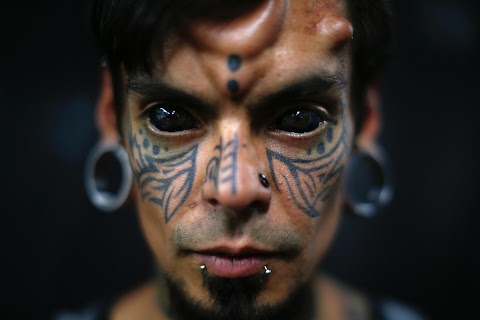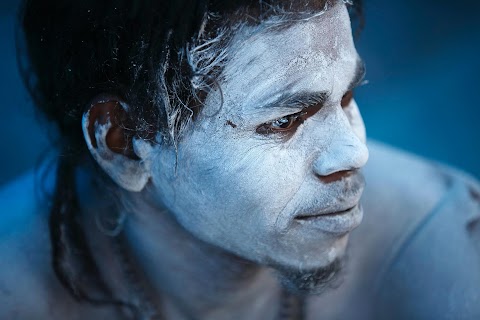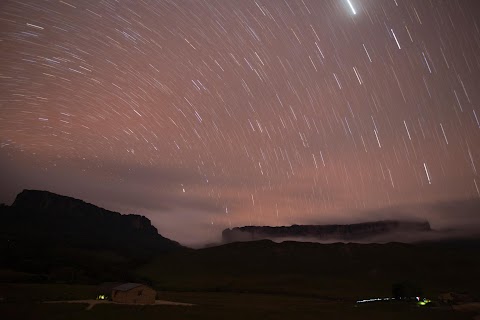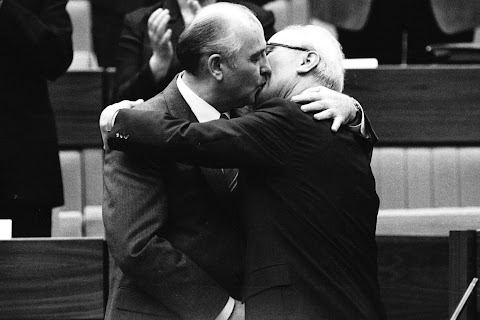
30 years of Reuters Pictures: Part two
Reuters multi-award winning photographers are celebrated here in a three part retrospective on the 30th anniversary of the service's launch. They have captured dramatic images illustrating the human tragedy of natural disaster and war as well as the fallout of economic events across the continents, creating iconic images, recognised around the world.
Above, Soviet Leader Mikhail Gorbachev (left) congratulates East German Leader Erich Honecker with a kiss after Honecker's re-election as General Secretary of the Communist Party Congress in East Berlin.

Rescue workers carry fatally injured New York City Fire Department Chaplain, Father Mychal Judge, from one of the World Trade Centre towers in New York.
Reuters photographer Shannon Stapleton: I will never forget the phone call from my bureau chief on the morning of September 11, 2001.
"Shannon. A plane has hit the World Trade Center. Can you get down there as soon as possible?"
I went to Times Square and looked at the jumbotron where people were starting to gather. Images of the first tower on fire were being shown.
I made it by subway to Canal Street. Upon emerging from the station I saw people were running and screaming away from the World Trade Center site.
It was at that point I knew I was about to cover probably one of the biggest stories of my young career right here in New York City, not somewhere far away that I had only seen in magazines.
I gathered my gear, which at the time was one of the first digital cameras, the Kodak DCS 520, and my Contacx G20 film camera with B/W film, and ran towards the towers.
Through the clouds of dust and shards of metal I noticed a group of men carrying a man slumped in a chair covered in dust.
Time stood still. It struck me that among all this chaos these five men were carrying a man I knew was dead out of the rubble.
I took several photos of them carrying him out as they yelled at me to get out of the way.
I had no idea that the man they were struggling to get out of there was Father Mychal Judge, the Chaplain of the FDNY and the first reported death at the World Trade Center.
I met the guys who carried him at the first 9/11 anniversary; they thanked me for taking that picture. They felt it was important that all know the story of Father Judge and that I had made that possible.

Bodies lie on a street in the Jabalya refugee camp in the northern Gaza Strip.
Reuters photographer Ahmed Jadallah: I was with a Reuters multimedia team to cover a big Israeli incursion into the Gaza Strip.
The Israeli tanks had started to withdraw when there was a big fire in one of the buildings due to an air strike.
As I was shooting pictures at the site amongst a crowd of people a tank shell hit us. At least 14 people were dead and many wounded, including me.
I had been hit with shrapnel that ripped apart my lower leg. I collapsed on the floor.
At that particular moment I felt like dying and sinking into a big hole in the ground, motionless.
I didn't stop thinking of my family and I could see people next to me fighting to survive, while some were already dead.
It all happened in a matter of seconds. Somehow, in the middle of all this, I took three pictures without looking directly through my camera. Don't ask me how I did that!
Two frames were out of focus and one in focus. This picture won first prize in the World Press Photo spot news category.

A Russian police officer carries a baby who was released from the Beslan school siege, in the province of North Ossetia.
Reuters photographer Viktor Korotayev: The Beslan school siege took place on September 1, 2004 during a festive ceremony to launch the new academic year at school No.1.
Pro-Chechen gunmen seized the school and took 1,300 hostages on the first day. Some 331 people were killed, half of them children.
On the second day of the siege, the captors were convinced to free several women with babies, so when a fighter of a special task unit was seen leaving the building with a child in his hands, there was hope that children could be saved.
I think that was why this photo was published on the front pages of numerous publications all over the world.
Throughout my career I've covered many difficult stories such as military conflicts in different countries, disasters, hostage situations. The Belsan tragedy remains the biggest psychological trauma I have experienced.

Opponents of Israel's disengagement plan from Gaza, scream as they speak with a special evacuation policeman in the Jewish Gaza Strip settlement of Kfar Darom in Gush Katif settlements bloc.
Reuters photographer Nir Elias: One of the most hardcore spots of "resistance" against the forces coming to evacuate the settlers was this settlement called Kfar Darom.
The settlers and many of their supporters were barricaded on the roof of the synagogue and the picture was taken after special forces came to take them down in containers lifted by cranes.
Before it happened I spent a week getting to know the people so that I could get their permission to go with them onto the roof.
I think the power of this picture is that this situation is quite bizarre as on one hand it shows the boiling point of something that had been building up for months and was supposed to explode but on the other there was no violence at all; just some strange moments because at the end of the day there was very much of a feeling of brotherhood on both sides.
It was quite a challenge to get close enough to the people for them to let me go up to the roof with them. I spent a week in a tent on the outskirts of the settlement winning their trust.
The forces were trying to break up the people on the roof by shooting coloured water cannons at them, hence the colours on their faces. The only way the people on the roof were taken down was one by one and hand in hand.

A man clings to the top of a vehicle before being rescued by the U.S. Coast Guard from the flooded streets of New Orleans, in the aftermath of Hurricane Katrina, in Louisiana.
Reuters photographer Robert Galbraith: I arrived in New Orleans three days after the hurricane struck, and was flown via a Coast Guard four-seat airplane from Alexander, Louisiana to the U.S. Coast Guard Station in New Orleans.
Unable to see anything other than the death and destruction visible through the open door, we began circling and descending and suddenly I saw a man, dressed in khakis, tennis shoes and shirtless, looking desperately toward us from the top of the van in rising flood water.
With the helicopter rotating closer, he rolled to his side and clung to the top of the vehicle.
Moments later a rescue swimmer loaded him into a basket and he was raised into the helicopter. We then flew to Louis Armstrong Airport, where he was placed on a stretcher and provided medical attention.
It was odd to see someone, six days after the hurricane struck, sitting on top of the van, a tall can of Budweiser beer and a broom nearby, visible in other pictures that were filed. When he entered the helicopter, he asked of my camera "What's that?"
The story had a major impact on me personally. I've covered many disasters - massive fires, floods, riots, earthquakes - but Hurricane Katrina was beyond category in what I had previously experienced.
When I returned home I was in the process of moving, and didn't watch television or connect my telephone for a couple of months.

A migrant crawls along a beach after his arrival, on a makeshift boat, at Gran Tarajal beach in the Canary Islands.
Reuters photographer Juan Medina: I heard a makeshift boat carrying migrants from Africa was on its way to the beach at Gran Tarajal, south of the island of Fuerteventura so I rushed there.
When I arrived, the migrants, who risk their lives trying to reach European soil in flimsy boats, were being treated by members of the Spanish Red Cross who were providing them with clothes and water. They were exhausted from their perilous journey.
The strength of this image is that it shows the contrasts in our society: on one side of the photograph you have people who seem to be enjoying the sun on the beach and on the other a man crawling through the sand after risking his life at sea.
It was challenging to show as clearly as possible the inhumane conditions African migrants must endure in order to reach Europe. But there are also many things that this image doesn't show but that are very important in explaining why these people risk so much.
For example, we don't get to see the suffering and solitude they endure after leaving their families behind.
I believe images that tell the stories of the migrants should affect everyone. Nobody should be immune to the plight of these people.

Kenji Nagai of APF tries to take photographs as he lies injured after police and military officials fired upon and then charged at protesters in Yangon's city centre.
Reuters photographer Adrees Latif: I was covering the "Saffron Revolution" in Myanmar where rising fuel prices ignited protests.
After weeks of protests mostly led by monks, security forces raided monasteries and arrested monks in an effort to quell the demonstrations.
On Sept. 27, tens of thousands of protesters took to the centre of Yangon, near the Sule Pagoda. Armed military forces arrived to the scene and dispersed the crowd with smoke bombs and machine guns.
Seconds after the military opened fire on the crowd, I saw a man falling to the ground and turned my camera to his direction to photograph. I would later learn it was Japanese video journalist Kenji Nagai working amidst the protesters.
On this particular morning, the military had set up roadblocks and there was an eerie silence in the air.
Before midday, I made my way by foot to the city centre. As I arrived, some dozens of protesters were shouting slogans. With every passing minute, their numbers multiplied.
I took position on a pedestrian bridge. From atop I could see dozens of military vehicles approaching. The soldiers opened fire soon after their arrival.
While photographing, I took refuge on a bridge full of protesters lying flat to avoid being shot. Soon after I felt a strong urge to preserve the images I had made and found a way off the bridge.
Over the years, I read of previous crackdowns by the junta on protesters but never saw photographic proof from reliable or unbiased sources.
This image provided a rare public glimpse of the raw brutality of one of the world's most secretive regimes.

A woman cries as she searches for her daughter and husband on the top of the ruins of a school in earthquake-hit Beichuan county, Sichuan province.
Reuters photographer Jason Lee: It was the fifth day after the deadly Sichuan Earthquake shook southwestern China. People were still looking for survivors in the ruins of Beichuan county, one of the worst-hit areas.
A landslide triggered by the earthquake had buried a kindergarten and the woman pictured, a mother of a four-year-old girl who was buried under the ruins, kept crying out her daughter's name and kept blaming herself, saying it was all her fault.
I was shooting military troops search for surviving children in the ruins when her desperate crying caught my attention. I tried to be quiet and crouched in front of her to shoot for about one minute and after a while checked with her relatives for more details.
On the morning of the earthquake, her daughter told her she wasn't feeling too well and didn't want to go to kindergarten. The mother was a bit upset, thinking her daughter might be lying to get away from school.
The mother, whose husband was also killed in the earthquake, kept saying that she was responsible for her daughter's death, as if she might still be alive if she had allowed her to stay at home.
The sadness in the woman's crying and the story behind it left a deep mark on me, reminding me of the cruelty and ruthlessness in disasters.
Covering this story affected me deeply. I was 33 at the time, in my best shape physically, and all I thought about was my career. But after the coverage, I felt it was time to start a family and have a warm home to return to.
Slideshow

Flames spew from an Air France Concorde seconds before it crashed in Gonesse near Paris Roissy airport. All one hundred passengers and nine crew members on board the flight died.

A mourner wearing a mask to ward off SARS hides under an umbrella during the funeral of doctor Tse Yuen-man. Between November 2002 and July 2003, an outbreak of SARS in southern China caused 774 deaths in multiple countries.

U.S. Marine Corp Assaultman Kirk Dalrymple watches as a statue of Iraq's President Saddam Hussein falls in central Baghdad. U.S. troops pulled down the six-metre high statue.

A Haitian suspected of being a multiple assassin for exiled president Jean Bertrand Aristide's Lavalas party is detained in Petit Goave. The man was detained by armed citizens who stoned him and then burn him alive.

A woman mourns the death of her relative who was killed in the Indian Ocean Tsunami in Cuddalore, south of the Indian city of Madras.

A Lebanese man shouts for help for a wounded man near the site of a car bomb in Beirut. The explosion killed Lebanon's former Prime Minister Rafik al-Hariri At least eight others also died.

Malnourished one-year-old Alassa Galisou presses his fingers against the lips of his mother Fatou Ousseini at an emergency feeding clinic in the town of Tahoua in northwestern Niger.

U.S. President George W. Bush hands back a crying baby who was passed to him from the crowd as he arrived for a dinner with German Chancellor Angela Merkel in Germany.

China's national flag is raised during the opening ceremony of the Beijing Olympic Games.

Protestors hold signs behind Richard Fuld, Chairman and Chief Executive of Lehman Brothers Holdings, as he takes his seat to testify at a hearing on the causes of the Lehman Brothers bankruptcy.

A U.S. soldier of 2-12 Infantry 4BCT-4ID Task Force Mountain Warrior takes a break during a night mission near Honaker Miracle camp in the Pesh valley in Kunar Province.

Palestinians run to escape, while one crawls, as Israeli soldiers fire teargas during Palestinian-Israeli clashes in the southern Gaza Strip town of Khan Younis.
